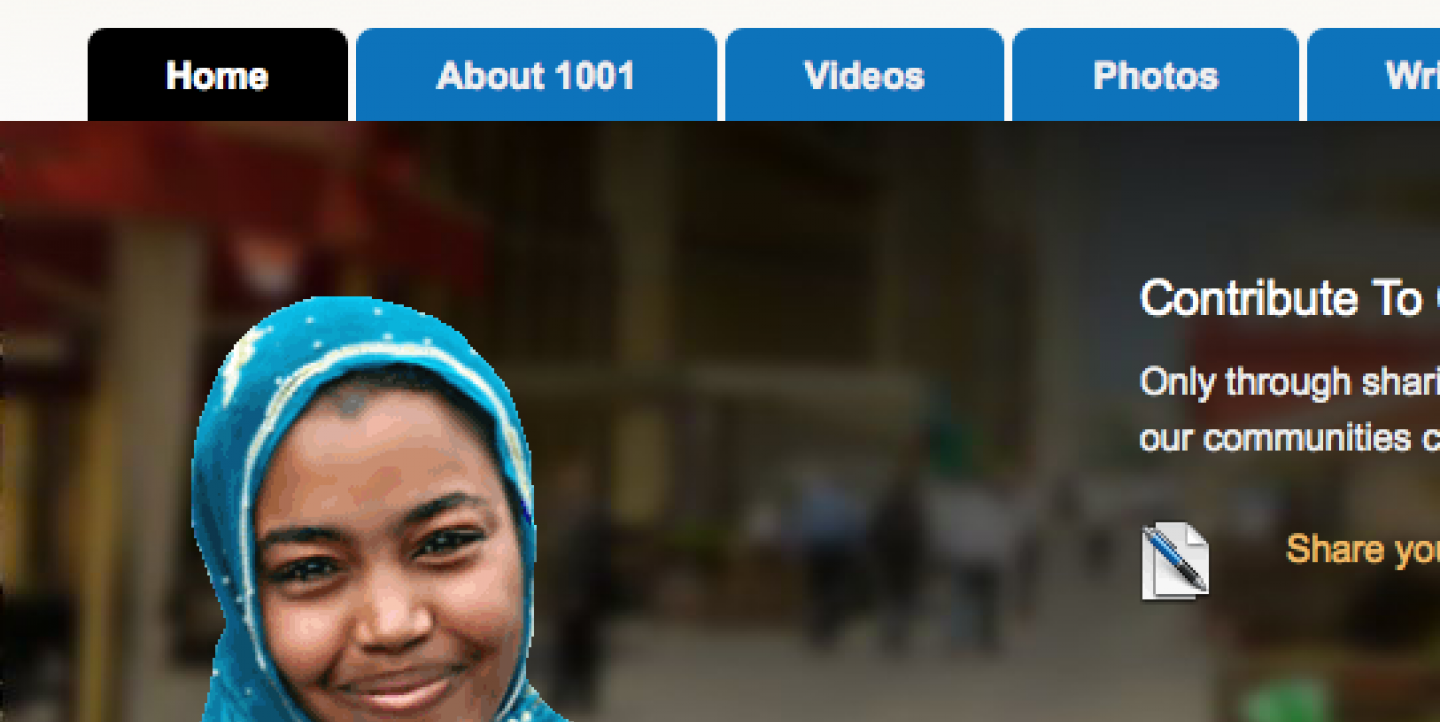A new website launched April 5 as a collaborative hub for news from the Middle East and North Africa.
Called 1001 Stories of Common Ground, it brings together bloggers, activists, journalists, women, youth and general readers to tell stories that highlight positive change while crossing religion, ethnicity, gender and race boundaries in the Middle East and North Africa region.
Search for Common Ground, an international NGO with offices in over 20 countries, is behind the ambitious project published in English, Arabic and French. Unlike the original stories of “One Thousand and One Nights,” members tell their own 21st century stories, finding inspiration in the real-life tales of their peers as well as place to interact with one another.
In the coming weeks, the site will announce a competition with cash prizes that can be put towards a conference or workshop that the winners would like to attend in the region.
IJNet talked to Juliette Schmidt, the Assistant Director of Partners in Humanity at Search for Common Ground to find out more.
IJNet: How is the content gathered?
Juliette Schmidt: All photographs, videos and writings on the site are user-generated. Membership to the site is open to everyone, free of charge and any member over 18 can contribute content.
IJNet: What do the contributors get out of posting stories on your site?
JS: Anyone can submit their own stories, photos and videos to the website, so long as the content is original and tells the stories of people working together with a shared vision for their neighborhood, town, country or region. Although anyone in the world can participate by commenting on existing content or uploading new content, most members are from the Middle East and North Africa.
Search for Common Ground will share the most inspirational and popular stories, images and video through the Common Ground News Service (www.cgnews.org), a weekly news syndicate that distributes opinion articles that foster dialogue on important topics in Muslim-Western understanding to over 30,000 email subscribers and thousands of media outlets around the world who republish these articles in local languages.
IJNet: How does a story qualify as one of “positive change?”
JS: The most important aspect of any submitted content is that it tells a story of the diverse citizens of MENA countries - all backgrounds, genders, socio-economic classes, religions, ethnicities - working together to use collaborative, rather than adversarial, approaches to achieving shared goals.
IJNet: Is the uploaded content monitored? Who decides what goes on the site?
JS: Articles and photos are reviewed as soon as they are posted by a team of administrators working in different time zones, to ensure content meets the terms and conditions of the site. Video content is reviewed before it is published since this medium is susceptible to spam, which we aim to keep off the site.
IJNet: How do you verify that the blogger, citizen journalist has the copyright to publish these photos, videos? Do you rely on your 20 local offices in the region?
JS: Anyone can submit their own stories, photos and videos to the website, so long as any content depicts constructive examples of diverse groups working for positive social change. All members must agree to the terms and conditions in order to post content, in the same manner as other user-driven content sites, such as YouTube or Facebook.
Local Search for Common Ground staff in Morocco, Yemen and Lebanon have contributed to the design, testing and launch of this site, however participation in the site is open to anyone and content is driven by the registered members of 1001 Stories of Common Ground.
IJNet: Your site mentions the goal is to improve Muslim-western relations, why not Muslim-Christian relations, East-West relations or even Arab-Western relations?
JS: Many stereotypes exist both within and between the so-called Muslim world and the so-called West which result in a tendency to see each group as a monolithic whole. Sites such as this one help to highlight the diversity within, while emphasizing the many, many groups working collaboratively for change.

